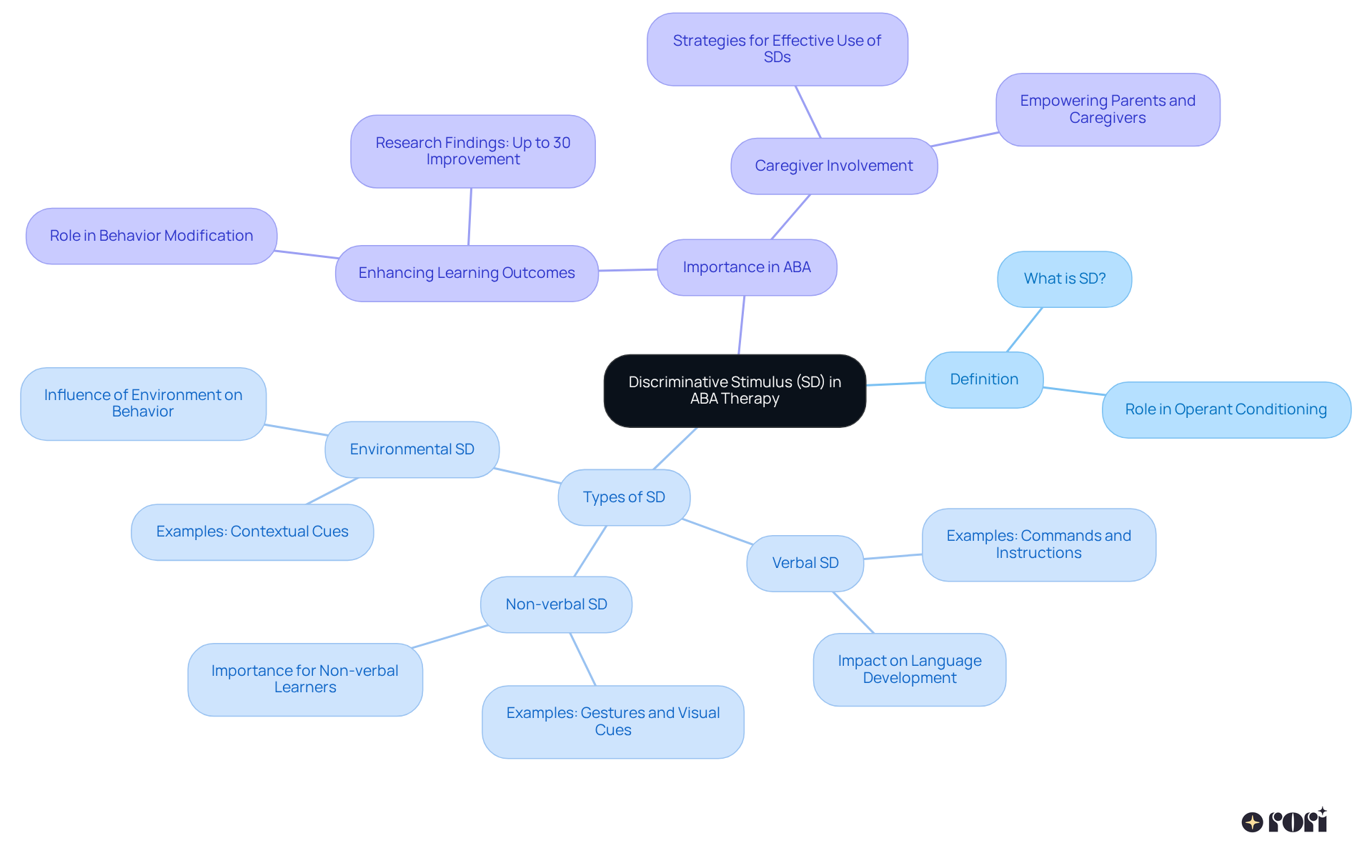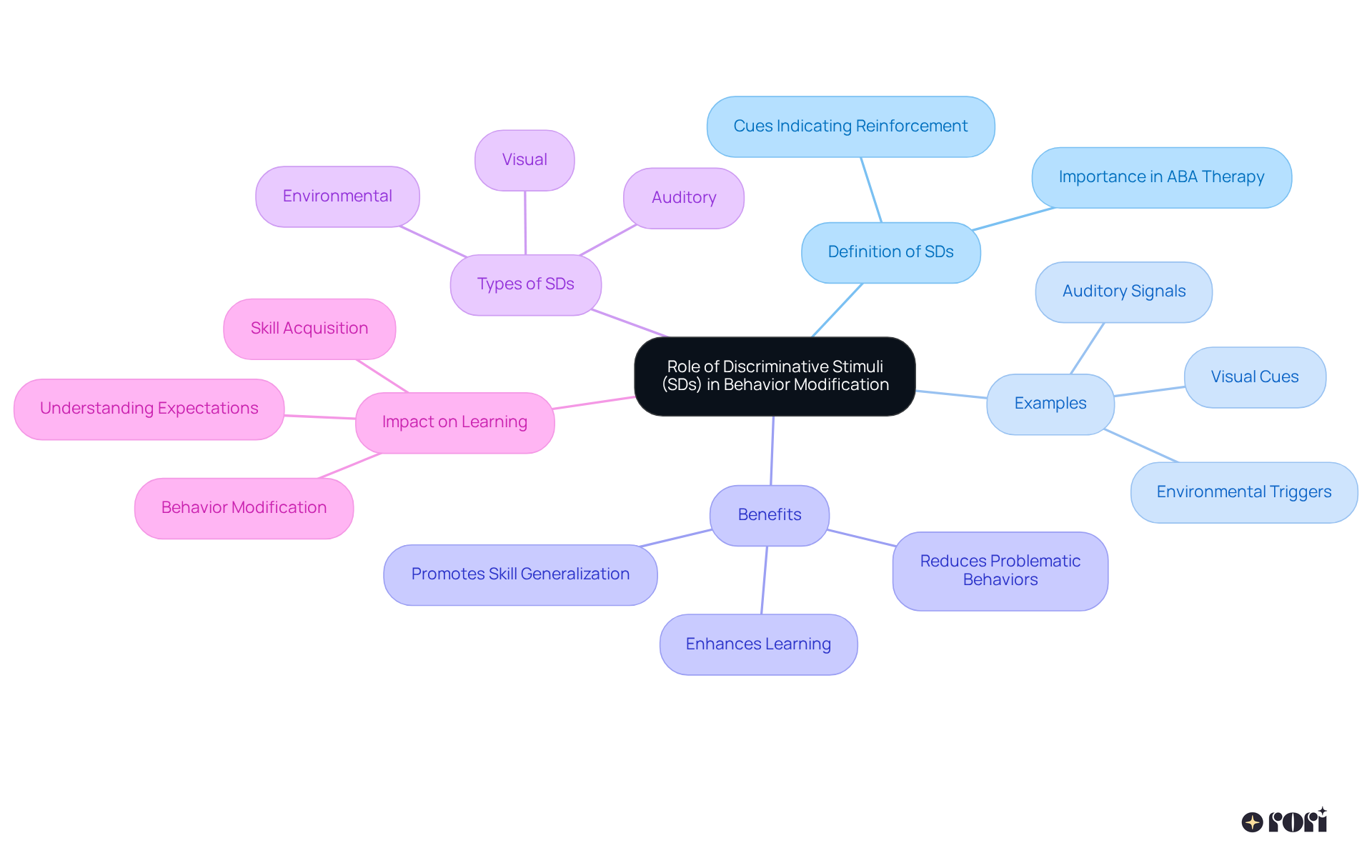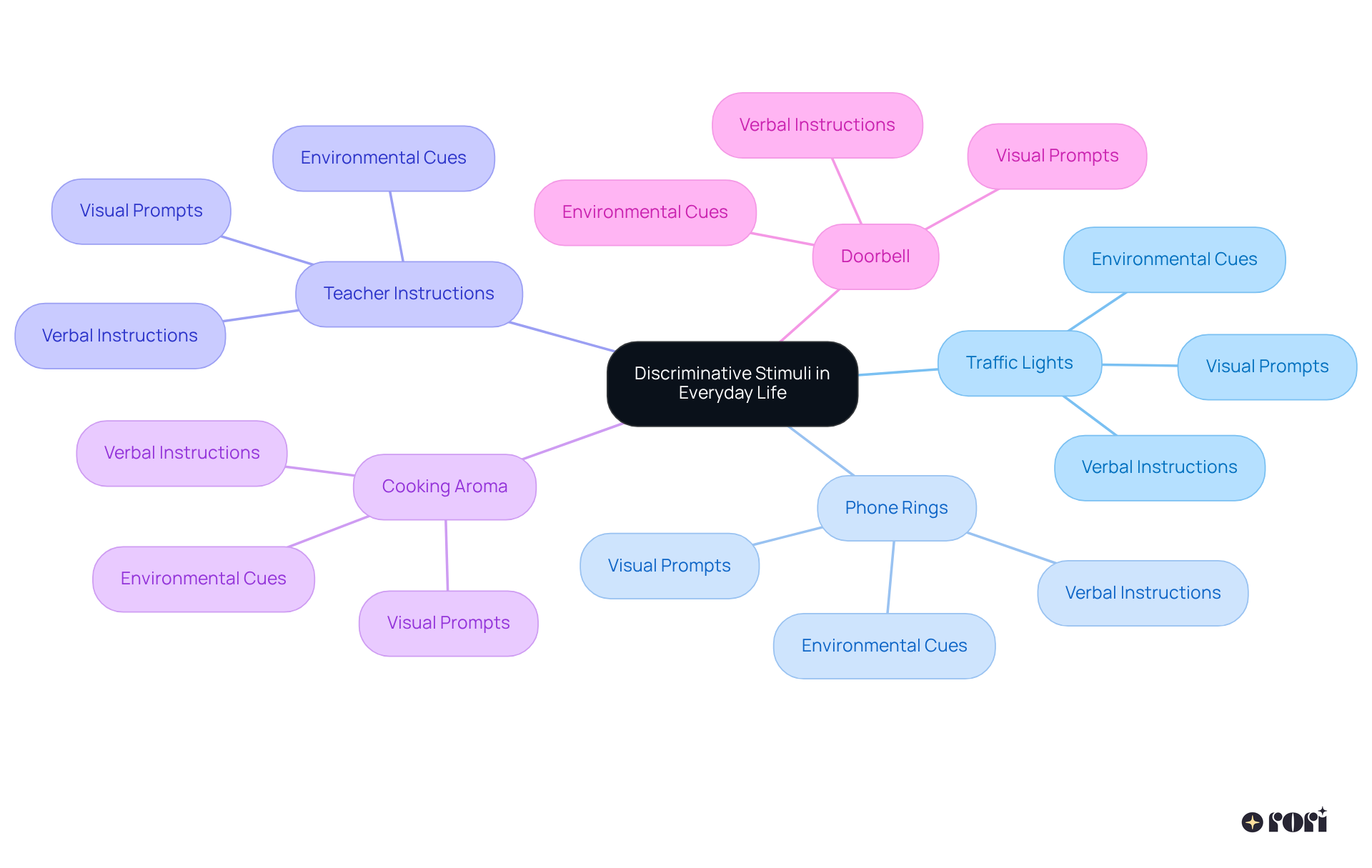Let’s explore the concept of SD, or discriminative stimulus, especially in the context of RBT (Registered Behavior Technician) and ABA (Applied Behavior Analysis) therapy. Think of SDs as cues that help signal when a specific behavior is likely to be rewarded. This guidance can really steer individuals towards actions that are preferred! 🌟
It’s important to recognize the various types of SDs—like verbal, non-verbal, and even environmental cues. These elements play a crucial role in shaping behavior and enhancing learning outcomes. For individuals with autism, creating predictable environments that reinforce positive behaviors can make a world of difference. We’re here to help you every step of the way! 😊
Understanding the nuances of behavior modification is essential, especially when it comes to Applied Behavior Analysis (ABA) therapy. At the heart of this practice is the discriminative stimulus (SD)—a subtle yet powerful cue that tells us when a specific behavior is likely to be reinforced. It's fascinating how these stimuli, whether verbal, non-verbal, or environmental, can significantly enhance learning outcomes, particularly for individuals with autism.
But how can caregivers and educators effectively use these cues to encourage positive behavioral changes? Let’s explore this together! By tapping into these insights, we can foster a supportive environment that promotes growth and understanding. We’re here to help you every step of the way!
What is SD in RBT? It refers to a discriminative stimulus that acts like a friendly nudge from the environment, signaling that a specific action might lead to a rewarding outcome. Think of it this way: when an educator says, 'raise your hand,' it’s not just a command; it’s an invitation to participate, with the promise of positive reinforcement, such as praise or attention. This concept is key in operant conditioning, where our actions are shaped by the results that follow them.
Did you know what is SD in RBT and that SDs come in three flavors? They can be verbal, non-verbal, or environmental, each playing a vital role in guiding behavior. Research even suggests that using SDs effectively can boost learning outcomes by up to 30%! This is especially important for individuals with autism, as it highlights what is SD in RBT and how crucial these cues are for behavior modification.
As Ralph Moller puts it, 'The positive results of discriminative stimulus are owed to positive reinforcement, which gives parents the resources they need to provide great care to kids on the spectrum.' By understanding what is SD in RBT, caregivers can create personalized interventions that truly enhance their child's learning and behavioral skills.
For example, a parent might say, 'time to clean up' as a verbal SD, encouraging their child to help organize their toys. This not only motivates but also reinforces the action with praise. It’s a beautiful reminder of the importance of caregiver education in using SDs effectively to support their child's development. Let’s explore this together and see how we can make a difference!

In ABA therapy, it is important to understand what is sd in rbt, as discriminative stimuli (SDs) play a vital role in guiding individuals toward actions they prefer. These clear and consistent cues help indicate when a specific action is likely to be rewarded. For instance, when a child discovers that saying 'please' while asking for a toy leads to receiving it, that phrase 'please' transforms into an SD. It nudges the child to use polite language in similar situations.
By consistently linking certain actions with rewards in the presence of SDs, therapists can effectively shape and modify responses over time. This approach not only aids in teaching new skills but also helps reduce negative behaviors by establishing clear expectations and consequences. Research shows that effectively using SDs, particularly in the context of what is SD in RBT, can significantly enhance learning and skill development, fostering positive changes in individuals with autism.
Moreover, incorporating SDs into therapy sessions creates organized and predictable environments. This predictability is crucial for individuals with autism spectrum disorder (ASD) to understand how their actions relate to the outcomes they experience. By using various types of SDs—like visual cues, auditory signals, and environmental triggers—therapists can customize interventions to fit each child's unique needs. This ultimately encourages skill generalization and independence.
A recent systematic review published in 2025 highlighted that understanding what is sd in rbt can lead to improved outcomes, with participants in ABA therapy averaging 58.80 hours of treatment per month. As specialists have noted, 'Mastering the use of SDs is essential for encouraging positive changes and promoting meaningful learning experiences for individuals with autism and related conditions.' Let’s explore this together and see how these strategies can make a difference in your child’s journey!

Discriminative stimuli are all around us, and they come in many forms! Take traffic lights, for instance—they serve as important signals for drivers. A green light means it’s safe to go, while a red light tells us to stop. Similarly, when a phone rings, it acts as a cue, prompting us to pick it up. In classrooms, a teacher saying, 'time to start your test,' encourages students to dive into their assessments.
Think about the delicious aroma of cooking wafting through the house, signaling that dinner is almost ready. Or the sound of a doorbell ringing, inviting us to greet a visitor. These examples show what is sd in rbt and how discriminative stimuli provide essential signals that guide our actions and decisions in various situations. Understanding these cues can be incredibly helpful for parents! By teaching children to recognize and respond to these stimuli, we can foster their independence.
It's also important to reinforce preferred actions right after they happen. This approach enhances the effectiveness of ABA therapy. There are three main types of discriminative stimuli:
Each plays a significant role in shaping behavior and facilitating learning in different settings. Let’s explore this together and discover how we can support our children’s growth!

Understanding discriminative stimuli (SD) in applied behavior analysis (ABA) is crucial for guiding behavior and promoting positive outcomes. These SDs act as important cues, signaling when a specific action could lead to a rewarding result. By recognizing their significance, caregivers and therapists can create supportive environments that enhance learning and behavioral skills, especially for individuals with autism.
Throughout this discussion, we explore the different types of SDs—verbal, non-verbal, and environmental. Each plays a vital role in behavior modification. When used effectively, these cues can lead to improved learning outcomes. Research shows they can boost educational results by up to 30%! Plus, reinforcing desired behaviors right after presenting SDs helps foster skill generalization and independence in children.
The insights shared here highlight the transformative power of discriminative stimuli in everyday life and therapy. By integrating SDs into daily routines and therapeutic practices, caregivers can provide essential support for their children’s development. Embracing this knowledge not only enhances the effectiveness of ABA interventions but also empowers individuals with autism to navigate their environments more successfully.
Taking the time to understand and implement these strategies can truly make a difference in the lives of those on the autism spectrum and their families. Let’s explore this together! We’re here to help you every step of the way!
What is a discriminative stimulus (SD) in ABA therapy?
A discriminative stimulus (SD) is a cue from the environment that signals that a specific action may lead to a rewarding outcome, encouraging individuals to engage in that behavior.
How does an SD function in the context of behavior?
An SD serves as an invitation to participate in a behavior, often accompanied by the promise of positive reinforcement, such as praise or attention, which shapes actions through operant conditioning.
What are the different types of SDs?
SDs come in three types: verbal, non-verbal, and environmental, each playing a crucial role in guiding behavior.
How effective are SDs in improving learning outcomes?
Research suggests that using SDs effectively can boost learning outcomes by up to 30%, highlighting their importance in educational settings.
Why are SDs particularly important for individuals with autism?
SDs are crucial for behavior modification in individuals with autism, as they help clarify expectations and guide appropriate responses.
Can you provide an example of an SD in action?
An example of an SD is a parent saying, "time to clean up," which serves as a verbal cue that encourages the child to organize their toys, reinforcing the behavior with praise.
How can caregivers utilize SDs effectively?
By understanding and using SDs effectively, caregivers can create personalized interventions that enhance their child's learning and behavioral skills.